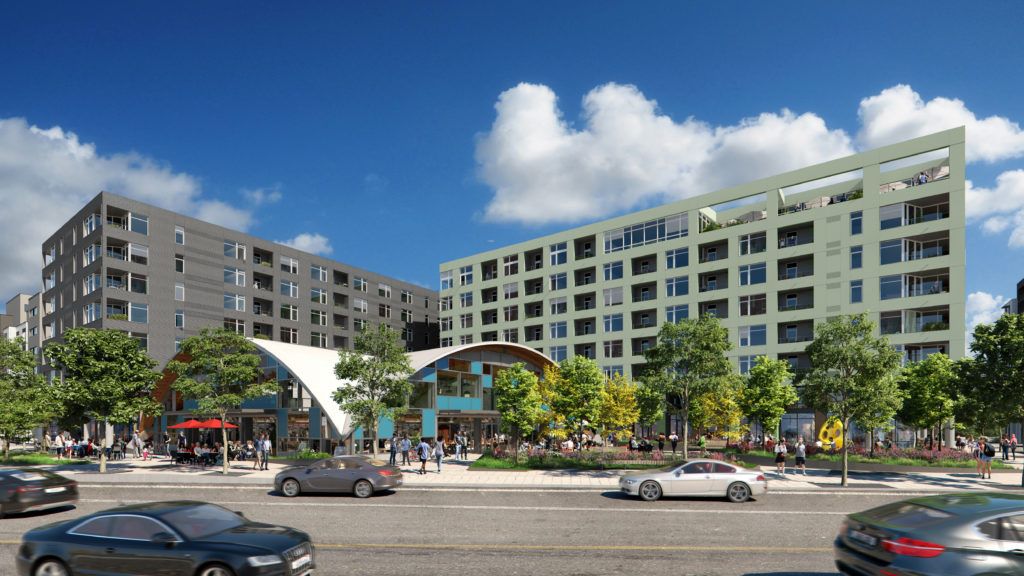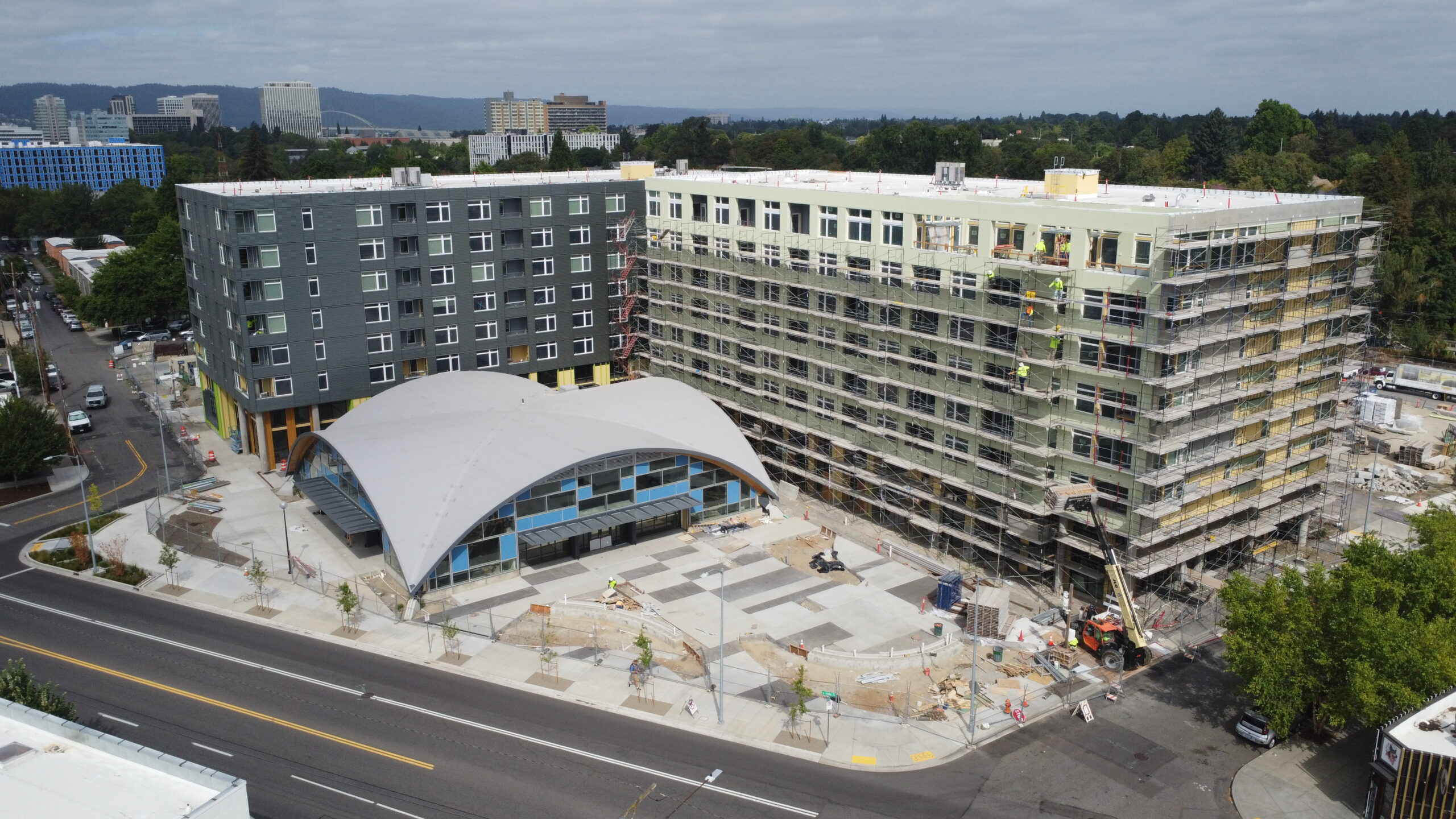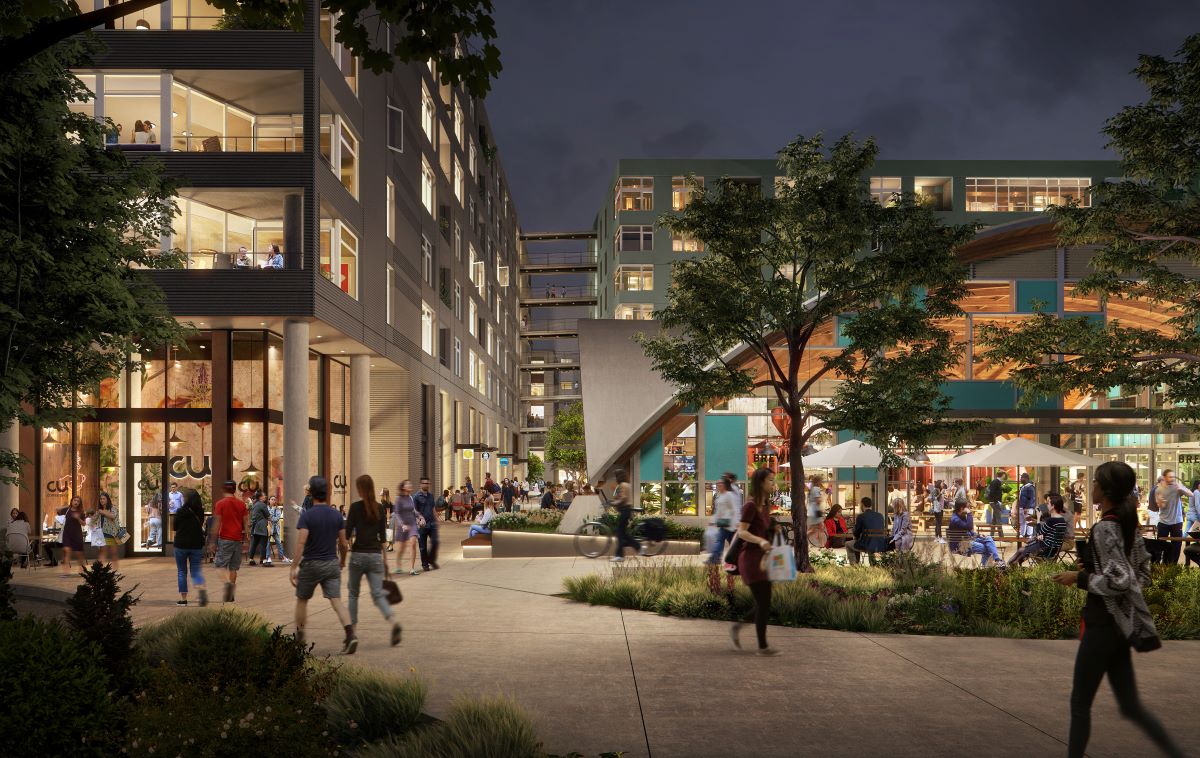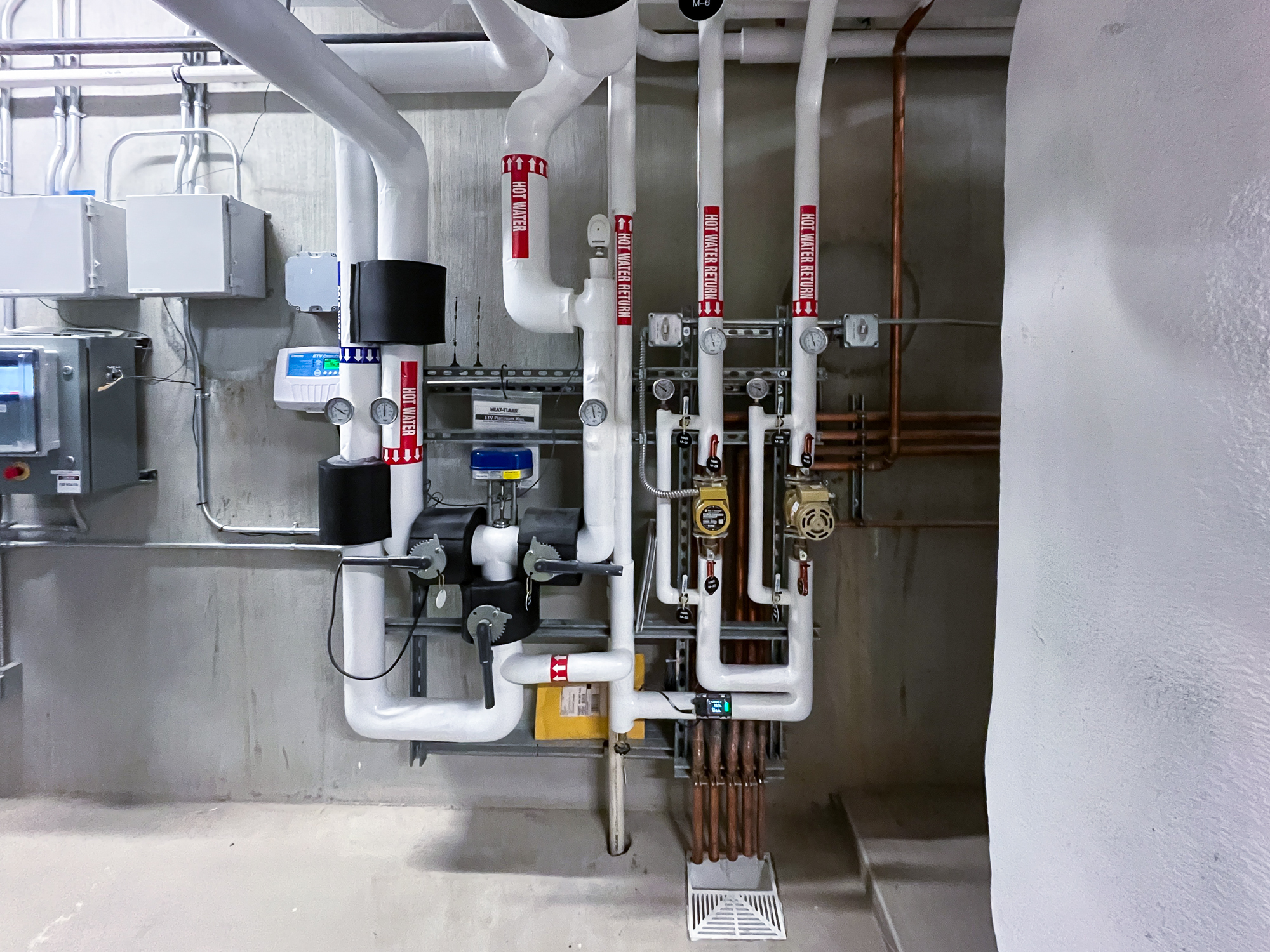
Rendering courtesy of Mithun
A System Designed For Sustainability
To serve the entire development, Splash relies on three Nyle Reverse Cycle Chiller (RCC) units, four storage tanks and one electric tank, all working in a series to form a highly efficient water heating system. Each tank is rated for a recovery rate of 480 gallons per hour (GPH). Together, these units boast a collective recovery rate of 1,440 GPH—a stark contrast to the ~20-40 GPH for a typical home electric water heater.
How It Works: Efficient Heat Circulation
The system functions similarly to how a typical heat pump air conditioning system operates, but in this case the entire refrigerant system is self-contained within the unit. They circulate refrigerant through a compressor that heats the refrigerant, which in turn heats the cold water being brought in to the RCC unit. The refrigerant is then circulated through an expansion valve and evaporator that condenses and dries the refrigerant before the compressor heats it again. The water continuously circulates in a loop, gradually heating to its target temperature. Additionally, a swing tank (electric water heater) that’s installed at the end of the system acts as both the first tank used and a back-up heat source.
Nyle RCC units
Installing High-Efficiency Machines at Splash
The installation at Splash posed unique challenges, as this type of system is rarely used in multifamily buildings. The large units, capable of generating airflow up to 16,000 cubic feet per minute (CFM), required careful planning to ensure appropriate intake and exhaust sizing—a high priority for a system like this.

Storage tanks
Saying Goodbye To Natural Gas
A major benefit of Splash’s system is the removal of natural gas. The units use significantly less electricity than traditional electric water heaters, as they only power a pump, compressor and fan intermittently rather than actively heating coils. In fact, a similar project in Seattle found that each apartment unit used just 37% of the typical kilowatt-hours (kWh) of energy compared to when each apartment unit had individual electric heaters. Overall demand was reduced by about 15%.

A snapshot of construction progress at Splash in NE Portland (August 2024)
What’s Next At Splash
Bonneville Power Administration has sponsored a one-year monitoring program through Ecotope to track the system’s performance, measuring temperature, flow and overall usage. We’ll continue to provide updates on R&H’s social media accounts as the project progresses, and look forward to when tenants will be moving into their new energy-efficient homes.
Client: Security Properties
Architect: Mithun



